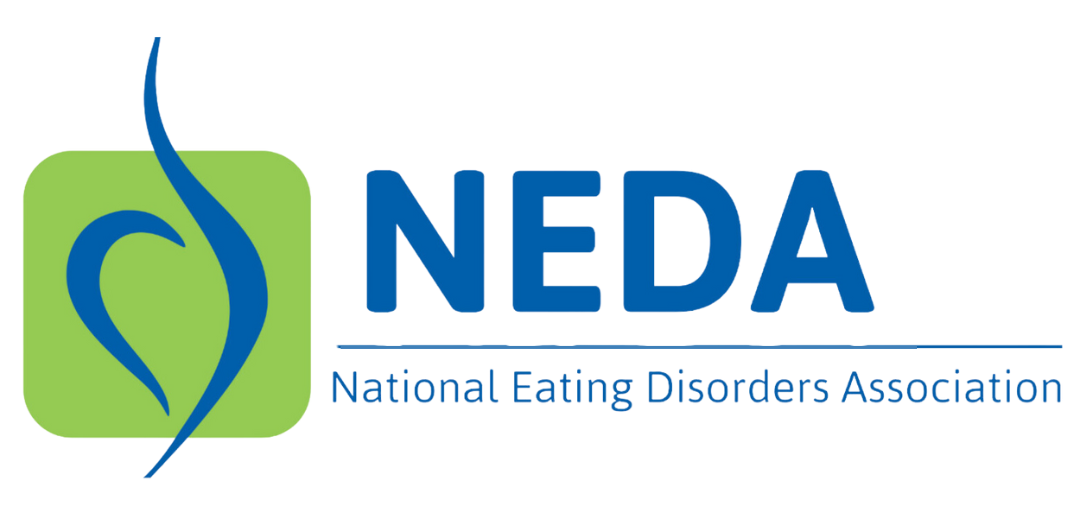By Mollie Schlapp-Gilgoff, LMSW
Reviewed by Amy Baker Dennis, PhD, FAED
LGBTQIA+ individuals experience higher rates of eating disorders compared to their heterosexual and cisgender peers as well as more severe eating disorder symptoms upon entering treatment.1,2 Additionally, research indicates that particular populations of the LGBTQIA+ community, such as those who identify as transgender or nonbinary, may be at greater risk for developing an eating disorder.3,4 While there is still a lack of research on the relationship between sexuality, gender identity, body image, and eating disorders, we know that LGBTQIA+ identified folks experience unique stressors that can contribute to the development of an eating disorder
Risk Factors
Potential risk factors that may play a role in the development of an eating disorder among LGBTQIA+ individuals can include:
- Experiences of rejection or fear of rejection by friends, family, and co-workers.5
- Internalized negative messages/beliefs about oneself due to sexual orientation and/or gender identity.6
- Experiences of violence and post-traumatic stress disorder (PTSD), which research shows sharply increases vulnerability to an eating disorder.7, 2
- Discrimination and stigma due to one’s sexual orientation and/or gender identity.7,8
- Being a victim of bullying due to one’s sexual orientation and/or gender identity.9,10
- Inability to meet body image ideals within some LGBTQIA+ cultural contexts.11
LGBTQIA+ youth also experience increased risks of homelessness and unsafe home and school environments:
- LGBTQ youth reported a 120% higher risk of experiencing homelessness compared to their heterosexual and cisgender peers. Additionally, LGBTQ youth who identified as black or multiracial had some of the highest rates of homelessness.12
- LGBTQ youth are also more likely to experience sexual, psychological, and physical abuse than straight/cisgender youth.2,13,4
- Furthermore, 36% of LGBTQ youth reported that they have been physically threatened or harmed due to either their sexual orientation or gender identity.15
Barriers to Support and Treatment
LGBTQIA+ people, in addition to experiencing unique contributing factors that place them at a higher risk for developing an eating disorder, may also face challenges in accessing the treatment and support needed to address an eating disorder. Common barriers to treatment may include: A shortage of culturally competent and affirming treatment, including insufficient eating disorders education among LGBTQIA+ resource providers who are in a position to detect and intervene as well as a lack of eating disorder specialists who are trained to work with LGBTQIA+ individuals. As a result many LGBTQIA+ people delay necessary treatment.16 For example, one study found that participants who had to educate health care providers about transgender people were 4 times more likely to delay necessary health care.17,18 Additionally 60% of LGBTQ youth who wanted mental health care were not able to get it.15
- LGBTQIA+ people are more likely to experience discrimination, harassment and denial of services by health and mental health care providers compared to the general population. One survey found that more than 1 in 5 LGBTQIA+ adults avoided medical care due to discrimination by health care providers. Additionally, the same survey found that 1 in 3 LGBTQIA+ people experienced mistreatment by a mental health care provider within the last year.19
- Structural inequities such as higher levels of unemployment, poverty, food insecurity and a lack of access to health insurance are additional barriers to treatment.20 For example, LGBTQIA+ people are more likely to delay medical and mental health care due to the cost of treatment compared to heterosexual/cisgender people with 18.4% of LGBTQIA+ people delaying mental health care compared to 4% of straight/cisgender people and 15.3% of LGBTQIA+ people delaying mental health care compared to 8.8% of straight/cisgender people.21
The emergence of LGBTQIA+ youth drop-in centers, gay-straight alliances, LGBTQIA+ community centers, and LGBTQIA+ healthcare resources have created more safe spaces to access support and mental health care overall. However, many LGBTQIA+ people still remain isolated in communities that do not offer such services/programs as most LGBTQIA+ centers and healthcare resources are located in urban areas and coastal states.22,23
In addition to a lack of LGBTQIA+ centers and resources in many parts of the country, there has also been an increase in discriminatory laws which prohibit LGBTQIA+ individuals from accessing affirming health care. For example, 19 states have passed discriminatory laws and policies that prohibit gender affirming care and 5 states have bans that make it a felony to provide gender affirming medical care to transgender youth.24 Furthermore, there are many states that do not have laws to protect LGBTQIA+ people’s right to access necessary medical care with 44 % of the LGBTQIA+ population living in states that do not have LGBT-inclusive insurance protections.24 This increase in discriminatory laws may further discourage LGBTQIA+ folks from seeking treatment for an eating disorder given the research on how LGBTQIA+ people often avoid or delay treatment due to experiences of discrimination or anticipation of being discriminated against. 17,18,19
Protective Factors
There are several factors that may protect LGBTQIA+ folks from engaging in disordered eating behaviors and/or developing eating disorders. Research has shown that some of these protective factors can include:
- Perceived support from family, school connectedness, and friend caring were linked to lower rates of disordered eating compared to those who did not experience these social supports.7
- Self-compassion was shown to be a protective factor for LGB individuals and was associated with lower rates of disordered eating.25
Research of LGBTQIA+ People and Eating Disorders
Research remains limited on eating disorders among LGBTQIA+ populations.
Existing research shows that:
- LGBT adults and adolescents experience greater incidence of eating disorders and disordered eating behaviors than their heterosexual and cisgender counterparts.8
- Nearly nine in ten (87%) LGBTQ youth reported being dissatisfied with their body.1
- Members of the LGBTQ+ community are at greater risk for food insecurity, eating disorders, and depression, particularly those who identify as trans males.26
- Transgender college students are over four times more likely than their cisgender counterparts to report an eating disorder diagnosis.3
- LGBTQ youth who have ever been diagnosed with an eating disorder had nearly four times greater odds of attempting suicide in the past year compared to those who have never suspected nor had an eating disorder diagnosis.1
Sources
[1] The Trevor Project. (2022). Research Brief: Eating Disorders among LGBTQ Youth. Available at: https://www.thetrevorproject.org/research-briefs/eating-disorders-among-lgbtq-youth-feb-2022/. Accessed on March 3, 2023
[2] Mensinger, J. L., Granche, J. L., Cox, S. A., & Henretty, J. R. (2020). Sexual and gender minority individuals report higher rates of abuse and more severe eating disorder symptoms than cisgender heterosexual individuals at admission to eating disorder treatment. International Journal of Eating Disorders, 53(4), 541–554. https://doi.org/10.1002/eat.23257
[3] Diemer, E. W., Grant, J. D., Munn-Chernoff, M. A., Patterson, D. A., & Duncan, A. E. (2015). Gender Identity, sexual orientation, and eating-related pathology in a national sample of college students. Journal of Adolescent Health, 57(2), 144–149. https://doi.org/10.1016/j.jadohealth.2015.03.003
[4] Nagata, J. M., Ganson, K. T., & Austin, S. B. (2020). Emerging trends in eating disorders among sexual and gender minorities. Current Opinion in Psychiatry, 33(6), 562–567. https://doi.org/10.1097/yco.0000000000000645
[5] Mason, T. B., Lewis, R. J., & Heron, K. E. (2017). Indirect pathways connecting sexual orientation and weight discrimination to disordered eating among young adult lesbians. Psychology of Sexual Orientation and Gender Diversity, 4(2), 193–204. https://doi.org/10.1037/sgd0000220
[6] Bayer, V., Robert-McComb, J. J., Clopton, J. R., & Reich, D. A. (2017). Investigating the influence of shame, depression, and distress tolerance on the relationship between internalized homophobia and binge eating in lesbian and bisexual women. Eating behaviors, 24, 39–44. https://doi.org/10.1016/j.eatbeh.2016.12.001
[7] Watson, R. J., Veale, J. F., & Saewyc, E. M. (2017). Disordered eating behaviors among transgender youth: Probability profiles from risk and protective factors. The International Journal of Eating Disorders, 50(5), 515–522. https://doi.org/10.1002/eat.22627
[8] Parker, L. L., & Harriger, J. A. (2020). Eating disorders and disordered eating behaviors in the LGBT population: a review of the literature. Journal of Eating Disorders, 8, 51. https://doi.org/10.1186/s40337-020-00327-y
[9] Pistella, J., Ioverno, S., & Russell, S. T. (2019). The role of peer victimization, sexual identity, and gender on unhealthy weight control behaviors in a representative sample of Texas youth. International Journal of Eating Disorders, 52(5), 597–601. https://doi.org/10.1002/eat.23055
[10] Katz-Wise, S. L., Scherer, E. A., Calzo, J. P., Sarda, V., Jackson, B., Haines, J., & Austin, S. B. (2015). Sexual minority stressors, internalizing symptoms, and unhealthy eating behaviors in sexual minority youth. Annals of Behavioral Medicine, 49(6), 839–852. https://doi.org/10.1007/s12160-015-9718-z
[11] Doyle, D. M., & Engeln, R. (2014). Body size moderates the association between gay community identification and body image disturbance. Psychology of Sexual Orientation and Gender Diversity, 1(3), 279–284. https://doi.org/10.1037/sgd0000049
[12] Morton, M. H., Samuels, G. M., Dworsky, A., & Patel, S. (2018). Missed opportunities: LGBTQ youth homelessness in America. Voices of Youth Count. https://voicesofyouthcount.org/brief/lgbtq-youth-homelessness/
[13] Baams, L. (2018). Disparities for LGBTQ and gender nonconforming adolescents. Pediatrics, 141(5). https://doi.org/10.1542/peds.2017-3004
[14] Tran, N. M., Henkhaus, L. E., & Gonzales, G. (2022). Adverse childhood experiences and mental distress among us adults by sexual orientation. JAMA Psychiatry, 79(4), 377. https://doi.org/10.1001/jamapsychiatry.2022.0001
[15] The Trevor Project. (2022). 2022 National Report on LGBTQ Youth Mental Health. Available at: https://www.thetrevorproject.org/survey-2022/assets/static/trevor01_2022survey_final.pdf. Accessed on July 11th, 2023.
[16] Kcomt, L., Gorey, K. M., Barrett, B. J., & McCabe, S. E. (2020). Healthcare avoidance due to anticipated discrimination among transgender people: A call to create trans-affirmative environments. SSM – population health, 11, 100608. https://doi.org/10.1016/j.ssmph.2020.100608
[17] Jaffee, K. D., Shires, D. A., & Stroumsa, D. (2016). Discrimination and delayed health care among transgender women and men. Medical Care, 54(11), 1010–1016. https://doi.org/10.1097/mlr.0000000000000583
[18] Alencar Albuquerque, G., de Lima Garcia, C., da Silva Quirino, G., Alves, M. J., Belém, J. M., dos Santos Figueiredo, F. W., da Silva Paiva, L., do Nascimento, V. B., da Silva Maciel, É., Valenti, V. E., de Abreu, L. C., & Adami, F. (2016). Access to health services by lesbian, gay, bisexual, and Transgender Persons: Systematic Literature Review. BMC International Health and Human Rights, 16(1). https://doi.org/10.1186/s12914-015-0072-9
[19] Center for American Progress. Report: Discrimination and Barriers to Well-Being: The State of the LGBTQI+ Community in 2022. (2022). Available at: https://www.americanprogress.org/article/discrimination-and-barriers-to-well-being-the-state-of-the-lgbtqi-community-in-2022/. Accessed on July, 12th 2023.
[20] Agénor, M., Geffen, S. R., Zubizarreta, D., Jones, R., Giraldo, S., McGuirk, A., Caballero, M., & Gordon, A. R. (2022). Experiences of and resistance to multiple discrimination in health care settings among transmasculine people of color. BMC health services research, 22(1), 369. https://doi.org/10.1186/s12913-022-07729-5
[21] Office of Health Policy. (2021). Health Insurance Coverage and Access to Care for LGBTQ+ Individuals: Current Trends and Key Challenges. Available at: https://aspe.hhs.gov/sites/default/files/2021-07/lgbt-health-ib.pdf
[22] Marx, R. A., & Kettrey, H. H. (2016). Gay-straight alliances are associated with lower levels of school-based victimization of LGBTQ+ youth: A systematic review and meta-analysis. Journal of Youth and Adolescence, 45(7), 1269–1282. https://doi.org/10.1007/s10964-016-0501-7
[23] Martos, A. J., Wilson, P. A., & Meyer, I. H. (2017). Lesbian, gay, bisexual, and transgender (LGBT) health services in the United States: Origins, evolution, and Contemporary Landscape. PLoS ONE, 12(7). https://doi.org/10.1371/journal.pone.0180544
[24] Movement Advancement Project. Equality Maps: Healthcare Laws and Policies. https://www.lgbtmap.org/equality-maps/healthcare_laws_and_policies. Accessed 6/15/2023.
[25] Rainey, J. C., Furman, C. R., & Gearhardt, A. N. (2018). Food addiction among sexual minorities. Appetite, 120, 16–22. https://doi.org/10.1016/j.appet.2017.08.019
[26] Arikawa, A. Y., Ross, J., Wright, L., Elmore, M., Gonzalez, A. M., & Fulgoni, V. L. (2021). Results of an Online Survey about Food Insecurity and Eating Disorder Behaviors Administered to a Volunteer Sample of Self-Described LGBTQ+ Young Adults Aged 18 to 35 Years. Journal of the Academy of Nutrition and Dietetics, 121(7), 1231–1241. https://doi.org/10.1016/j.jand.2020.09.032

